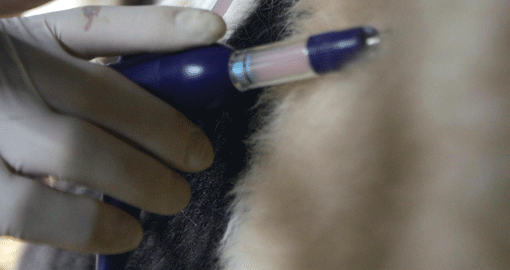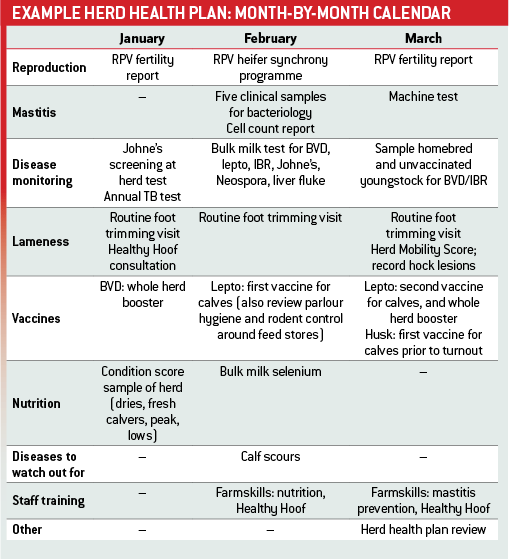Proactive health planning is vital

Herd-specific health plans drawn up between a farmer and vet are a vital component of dairy farm management. Vet Carolyn Baguley, Scarsdale Vet Practice, describes how plans work on their client’s farms.
What does your herd health plan mean to you? A necessary evil that sits out of sight on the shelf, to be dusted off once a year for inspection? Or is it a living, working, flexible tool that is often used and referred to?
Ideally it should be the latter. A written health plan provides an agreed method of dealing with disease (both prevention and cure) and of monitoring changes. In addition, Health Plans are auditable, ensure accountability and mean those further down the “farm to fork” chain, including the final consumer, can be assured that health and welfare on farm are being well looked after.
Templates
There are many templates for herd health plans that comply with the requirements of National Dairy Farm Assured Schemes (NDFAS). Scarsdale’s dairy herd health plans are dynamic tools in which vet and farmer work together to improve the health and profitability of the herd. They come in the form of a folder that contains a comprehensive overview of health and disease on the farm. They are viewed and reviewed regularly by all farm staff, who should have an active involvement in the implementation and maintenance of the plan.
The document starts with a series of individual action plans or set protocols – for example, for downer cows, calf colostrum, isolation facilities, biosecurity and mastitis among other things. These are particularly useful on farms with lots of staff, to make sure everyone is consistently singing from the same hymn sheet. The protocols aim to stop problems occurring in the first place – prevention is always better than cure.
The next section is categorised into different areas, including infectious disease, calf management, lameness, fertility and mastitis. For each section there are information sheets on particular topics of interest and recording sheets to record incidences of different conditions. At the end of each year, quarter or month, lameness, mastitis and fertility parameters and culling figures are reviewed, and progress monitored.
A calendar is created detailing the events that happen on farm in each category each month. This makes it easy to plan, and check that everything that needs to happen is happening – without this, it can be easy to forget when the next bulk milk sample or cell count report is due. An example of part of a calendar is shown in the table.
Surveillance
The importance of recording and monitoring is paramount. In the health plan, records are made and compared with targets, and regular health screens are performed. This regular surveillance means there is an increased awareness of disease situations on farm. When targets or aims are not being met, or when signs of exposure to disease arise, early intervention can be instigated. By recording all of this information, any consumer audits can be easily performed and confidence created in the farm.
Tools
When problems are identified, there are a large number of tools available that we can then use to drill further into the data and find solutions. For example, by carrying out a DairyCo Mastitis Control Plan it is possible to identify key areas for attention. On one client’s farm, the plan showed the main issue was dry period origin mastitis in the winter. This has enabled the farmer to focus on the dry cow winter housing to try to prevent these problems.
In today’s competitive markets, demonstrating improvements to health and welfare (or maintaining a healthy herd) are a key part of consumer assurance. The advantage of a good herd health plan is that the assurance comes as a side effect of improved profitability.

